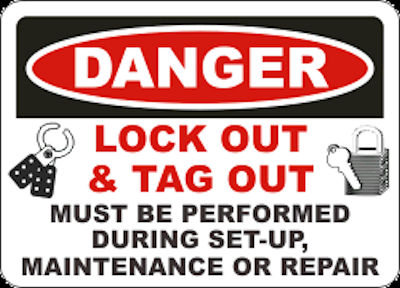Hazardous Energy Control (Lockout/Tagout)
Hazardous Energy Sources
During the servicing and maintenance of machines and equipment, the unexpected startup or release of stored energy could cause injury to employees. Therefore, energy control procedures to lock and/or tagout energy courses are very important.
Various energy sources can be hazardous to workers on the offshore rig, including the following categories:
- Potential Energy: Stored energy that can be drawn upon to do work. Suspended loads, compressed springs, and pressurized hydraulic systems are examples. Potential energy can be converted to kinetic energy and many of the other energy forms described below.
- Kinetic Energy: Energy resulting from moving objects such as released loads and uncoiling springs. When these objects are released, their potential energy is converted to kinetic energy.
- Flammable/Explosive Energy: Energy converted from the combustion of gases, liquids, solid chemicals, and vapors.
- Chemical Energy: The capacity of a substance to do work or produce heat through a change in its composition. Chemical energy can be converted from gases, liquids, solid chemicals, and vapors.
- Electrical Energy: Energy generated through the conversion of other forms such as mechanical, thermal, or chemical energy. Energy stored between plates of a charged capacitor is an example of potential electrical energy. Typical electrical energy sources include open busbars, motors, and generators.
- Thermal Energy: Energy transferred from one body to another as the result of a difference in temperature. Heat flows from the hotter to the cooler body. Sources include mechanical work, radiation, chemical reactions, and electrical resistance.
Knowledge Check Choose the best answer for the question.
2-1. Which of the following categories of energy results from moving objects such as released loads and uncoiling springs?
You forgot to answer the question!

